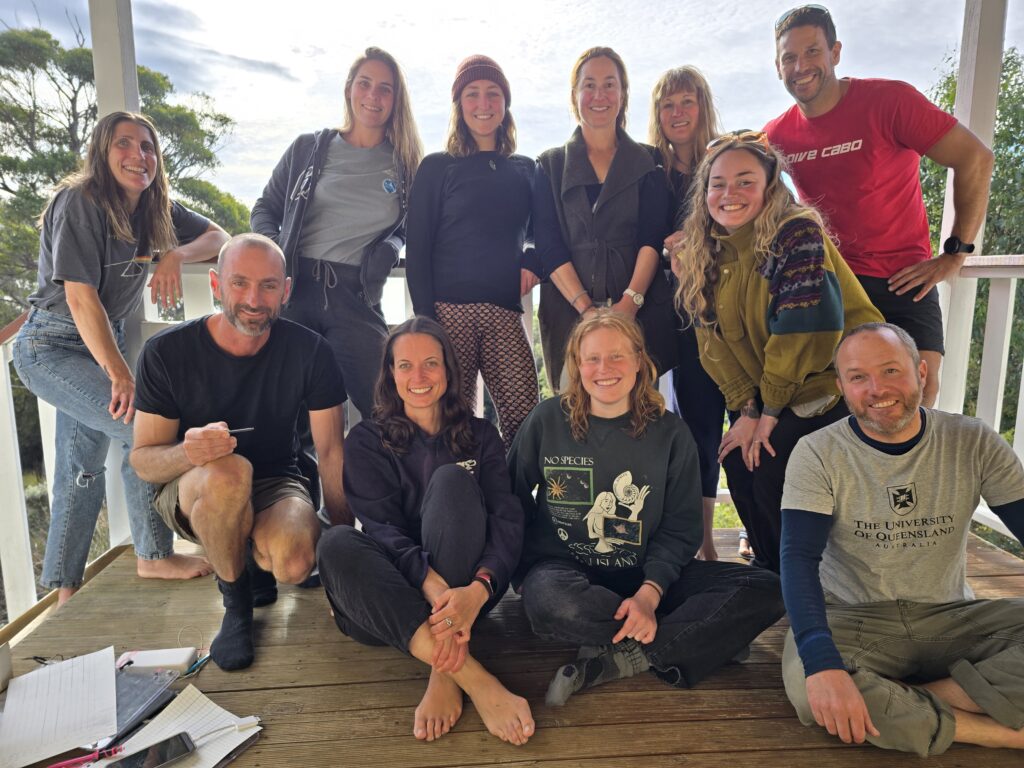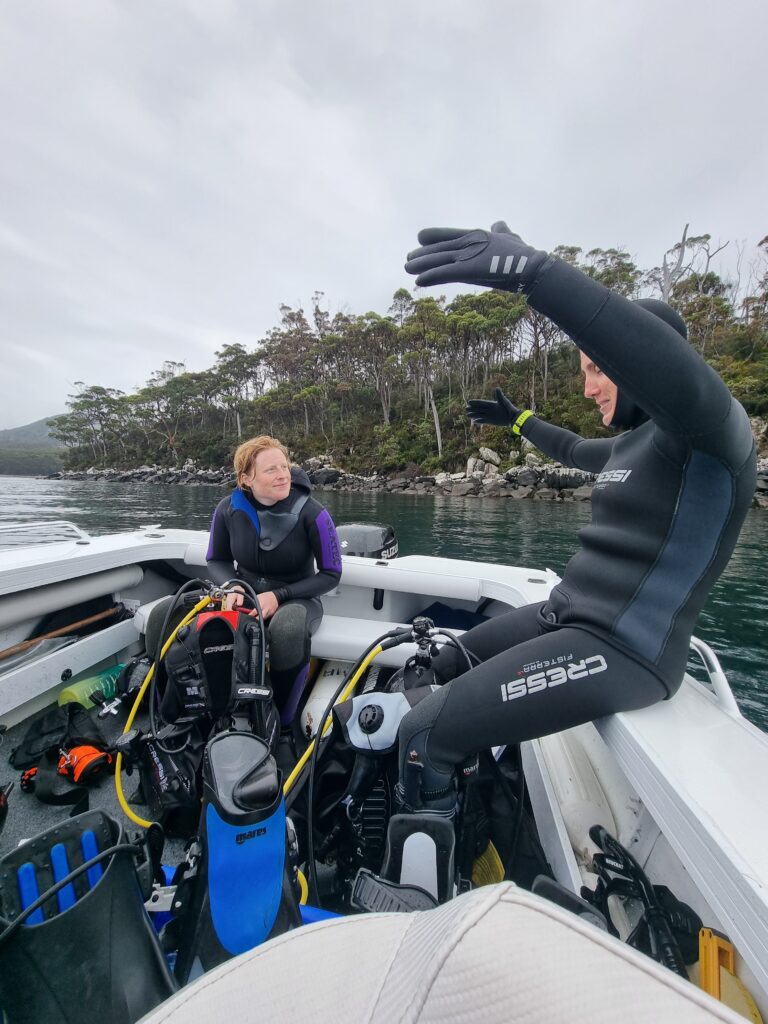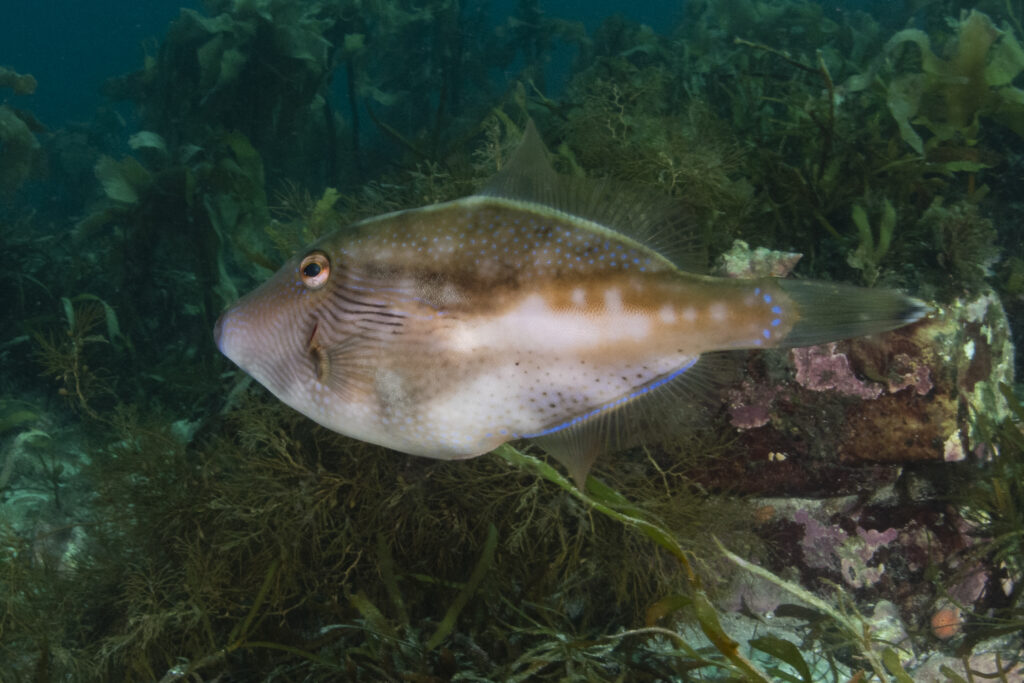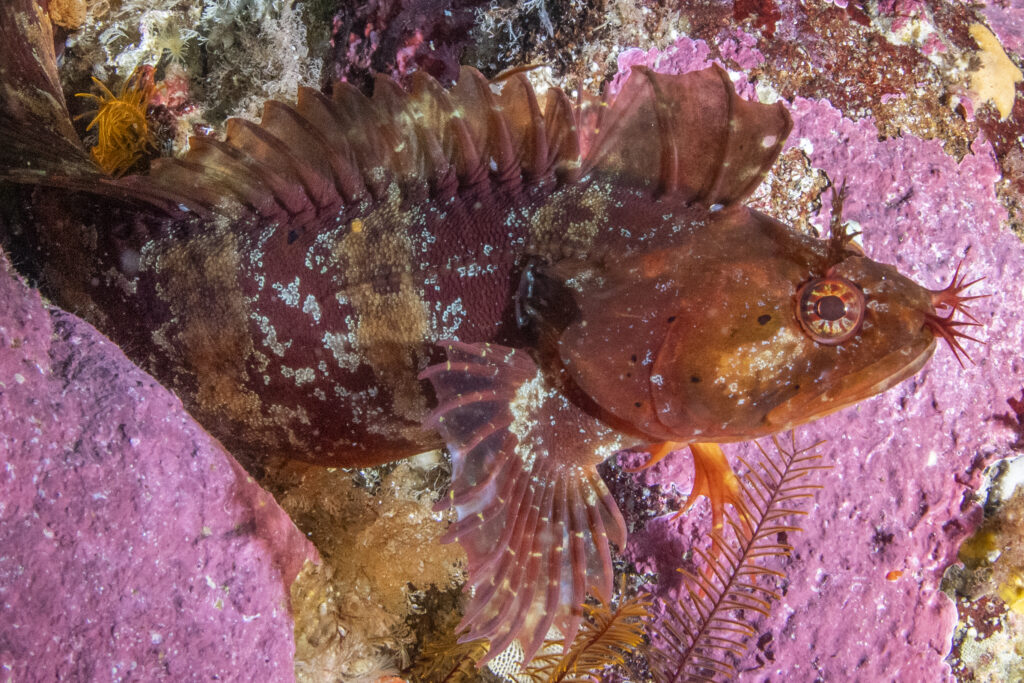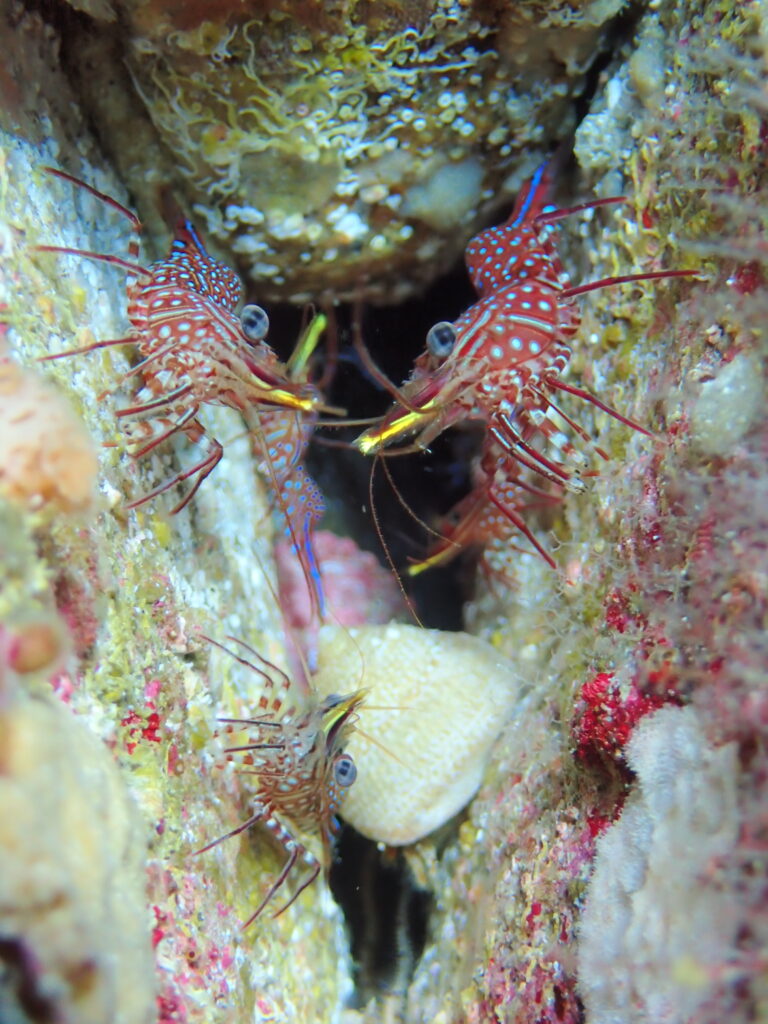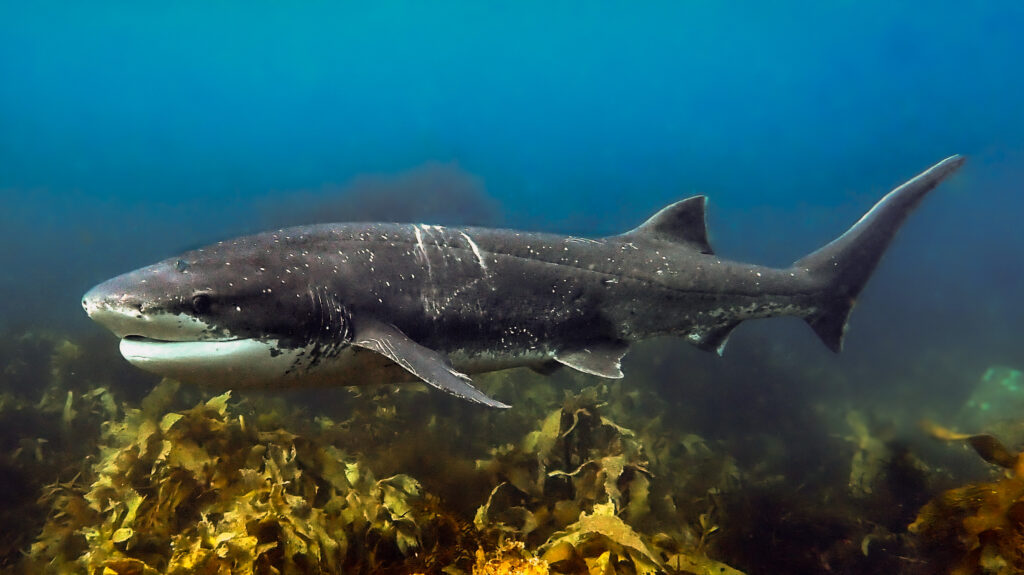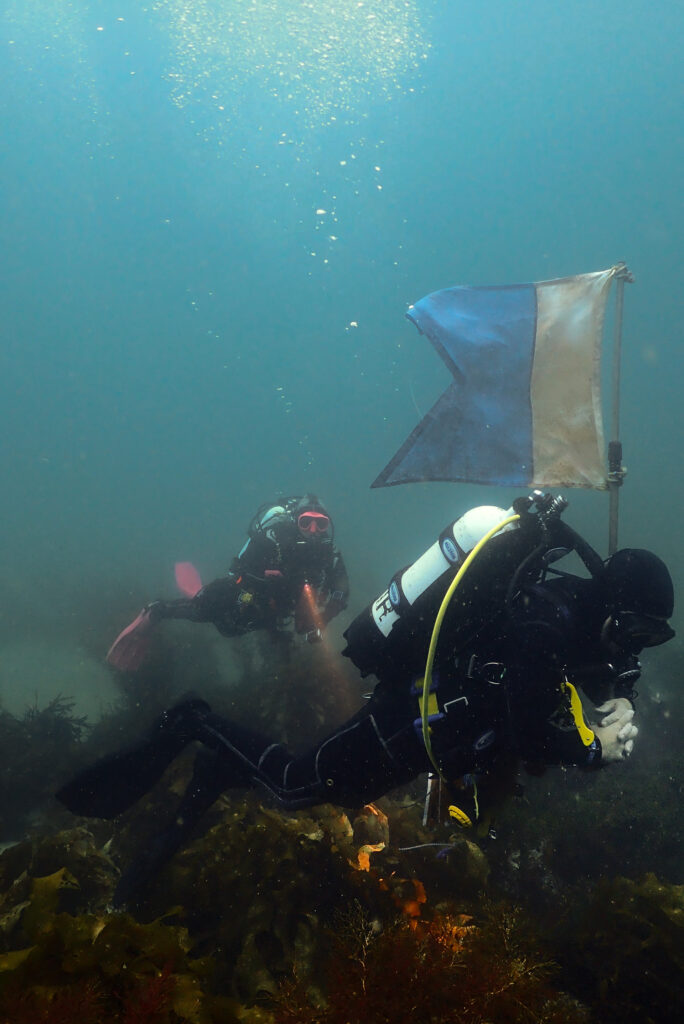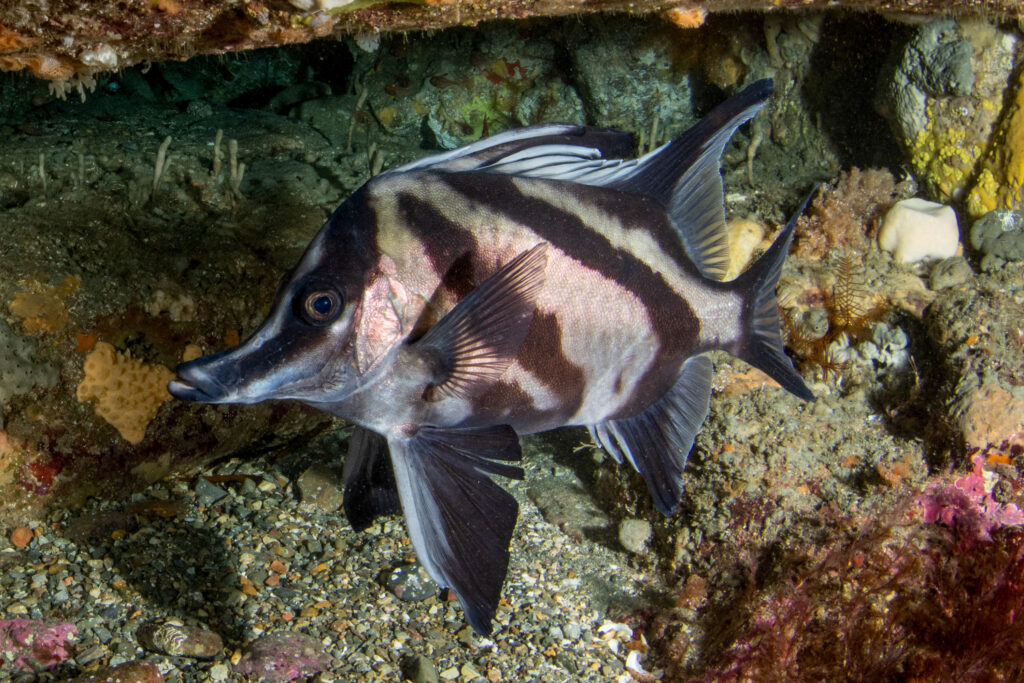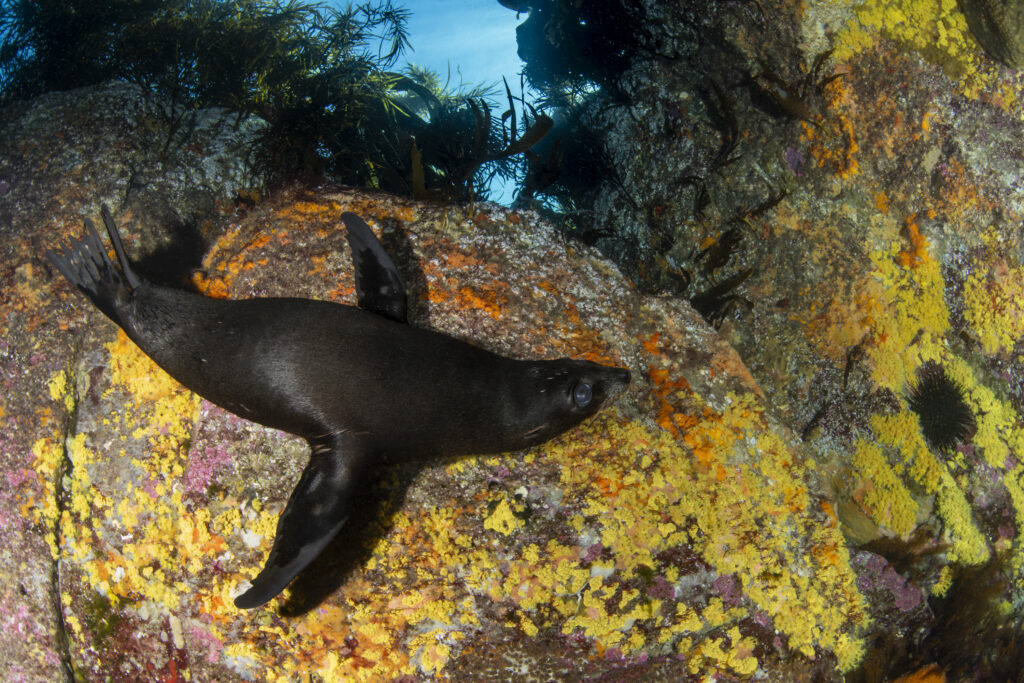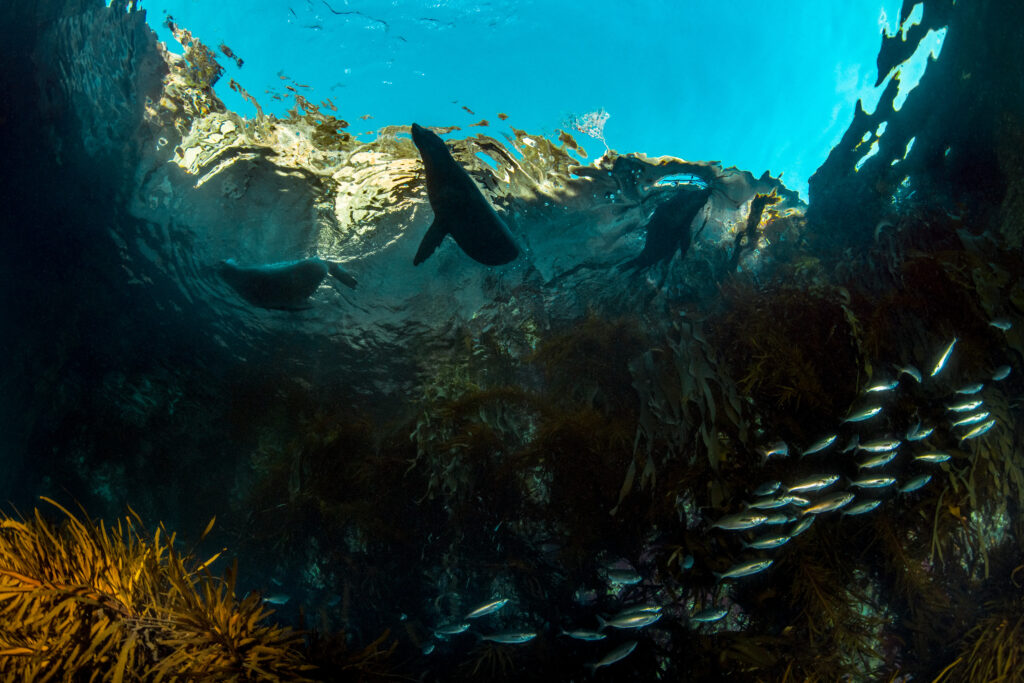It had been several years since the last RLS training session ran in lutruwita/ Tasmania, and on one sunny morning in April, 2024, there was a tangible excitement in the air as a group of brand new trainees met with some RLS old hands to learn the ropes. Squeezing our way into 7mm wetsuits as the autumn sun beamed down, a few grins were shared as we realised we had picked an absolute cracker of a day to kick off training; it almost felt like summer. Vis was good, the swell was minor, and our team of seven trainees and three trainers plunged into the water for survey number one out the front of the Tessellated Pavement. Splitting into two teams, group one abord the Eaglehawk Dive Centre boat included trainers Meryl Larkin and Scott Ling, and trainees Paul Tompkins, Leigha Aitken, Deb Marguerite, Marianne Pelletier, and Lexi Lewis. On the smaller RLS boat were trainer Rick Stuart-Smith, and trainees Marina Kouzmin and Natalie Otte.
It was a quiet day for fish at the first site, and an even quieter day for invertebrates, so the trainees had a reasonably easy entry into in-situ species identification. A Melbourne skate (Spiniraja whitleyi) cruised across Rick’s transect, while Scott and Meryl’s team spotted many of the usual suspects, along with a very cute Shaw’s cowfish (Aracana aurita) and some cryptic southern rock cod (Scorpaena papillosa). Deep Glen Bay was next on the list for Mez and Scott’s trainees, while Rick’s team headed south to Waterfall Bay. Long-snouted boarfish (Pentaceropsis recurvirostris) and draughtboard sharks (Cephaloscyllium laticeps) greeted the team at Waterfall Bay as they surveyed through a lush mixed canopy of bull kelp, crayweed, and golden kelp. Bommies were scattered across the site, making for some high-profile habitat occupied by plenty of purple wrasses (Notolabrus fucicola), marblefish (Aplodactylus arctidens), and leatherjackets.
Meeting back at the accommodation after an action-packed day surveying four sites and even jumping in for a quick look at Cathedral Caves, the team bunkered down for an afternoon of data entry and species identification. Plans for the following day were set, with both teams aiming to survey sites at Fortescue Bay.
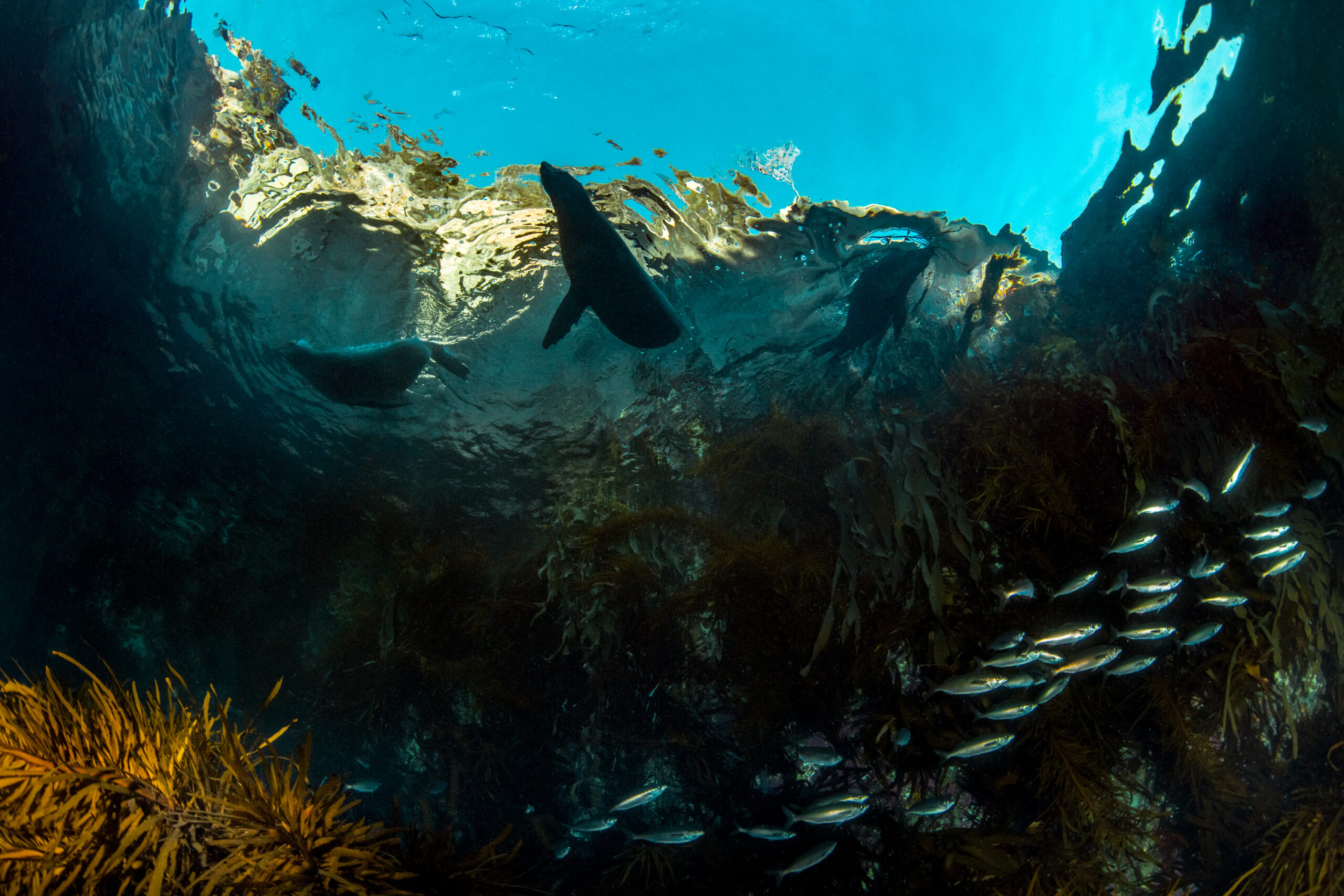
Day two was another cracking day with blue skies and high vis, and the fish enthusiasts were even visited by some charismatic megafauna. The Fortescue Bay sites did not disappoint, with lush kelpy understorey and Australian fur seals (Arctocephalus pusillus) darting about during the surveys. Some members of Scott and Meryl’s group truly lucked out and saw the fish of the trip; a broadnose sevengill shark (Notorhynchus cepedianus). Trainee Marianne would later recount the tale to the team at the Great Southern Reef Foundation, describing the way the large creature materialised as she and her buddies popped their heads out of the kelp during method two surveys. And what a stunning creature it was, cruising across the transect line, curious about the divers foraging through the kelp. During Marianne’s safety stop, the gorgeous giant came right up to her, locking eyes from less than a metre away in mid water. Not only was this the fish of the day, and of the whole trip, but this was the first time ever that a sevengill had been recorded on an RLS transect. These sharks belong to the ancient order Hexanchiformes; the frill and cow sharks, which is the most primitive living order of sharks in the world. Although its relatives are largely deep-sea dwellers, N. cepedianus is known to inhabit coastal waters less than 200m deep.
Aside from elasmobranch encounters, one highlight for the team was visiting a range of Scott Ling’s giant kelp restoration sites throughout the trip, which double as RLS survey sites. If you’re familiar with Scott Ling, you’ll know he is a bit of a legend in the unfolding kelp and urchin story. A key focus in Scott’s work on the Great Southern Reef has been the restoration of giant kelp forests. Once abundant, giant kelp forests on Tasmania’s east coast are now severely collapsed in the face of warming waters and overgrazing from urchin species Centrostephanus rodgersii, whose population numbers in Tasmanian waters have skyrocketed in recent years. It was great to have Scott along, not only as the researcher behind the successful kelp outplantings, but also as a long-time RLS diver, collaborator, and helping hand. Surveyors Cove, which turned out to be aptly named, was surveyed on day four of the trip and showed some great potential for future growth trials of kelp! You can learn more about Scott’s research and restoration efforts HERE.

The final day of the trip would see both teams headed out to Port Arthur in some gloomy conditions. In typical Tasmanian fashion, a thick blanket of grey rain clouds had rolled in and would ensure that everyone stayed damp and a bit chilly for the duration of the day- but you can't get rained on under water, and the vis was pretty good! Rick’s team pulled up at their first site, finding it already occupied by a group of three fur seals doing yoga stretches in the shallows, as a fourth larger seal chased a school of fish through the bay. Clusters of long-snouted boarfish (Pentaceropsis recurvirostris) haunted slimy clumps of Cystophora, and large herring cale (Olisthops cyanomelas) were out in numbers. Scott and Meryl’s group motored out to Stinking Bay, which was not as rancid as the name would have you believe, followed by a second new site nearby Surveyors Cove. Here, the team spotted a weedy seadragon (Phyllopteryx taeniolatus), which was a real treat that left those on Rick’s boat wondering if his team may be cursed to miss all the best sightings. All keen to get out of the rain, both groups wrapped up their surveys by lunch time and headed to the iconic Lufra Hotel for a bite to eat and some final data entry and feedback from trainers.
All in all, it was a wonderful few days which left everyone stoked and keen to get out there again soon. With the team steadily growing in Tassie, more surveys are certainly on the horizon, and all trainees were left feeling well equipped to do them. This trip wouldn’t have been possible without ongoing support from Eaglehawk Dive Centre, who provided tank fills, vessel charter, and legendary skipper Mick to deliver us to and from survey sites. Support from RLS Trainer Meryl who travelled all the way from Port Stephens, and long-time RLS diver and collaborator Scott Ling who took time out of his busy kelp-planting schedule, as well as RLS Cofounder Rick Stuart-Smith, ensured all new RLS trainees had access to the best training possible. A huge thank you also to the State Cinema and the Lufra Hotel for hosting our large group of marine enthusiasts during training and data entry sessions before and after the trip. And finally, a huge congratulations to our new trainees! We can’t wait to see you again soon in the big blue.
